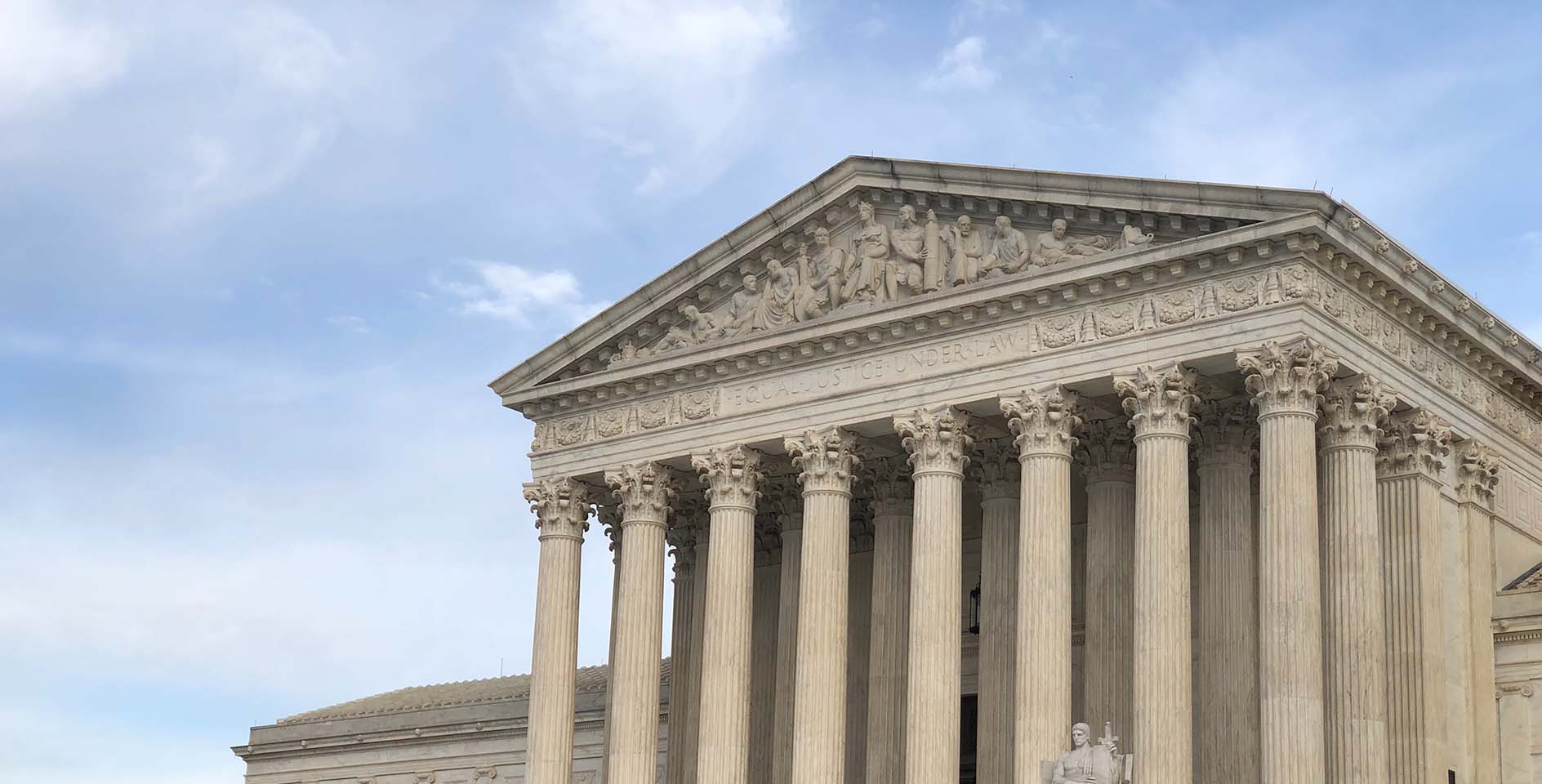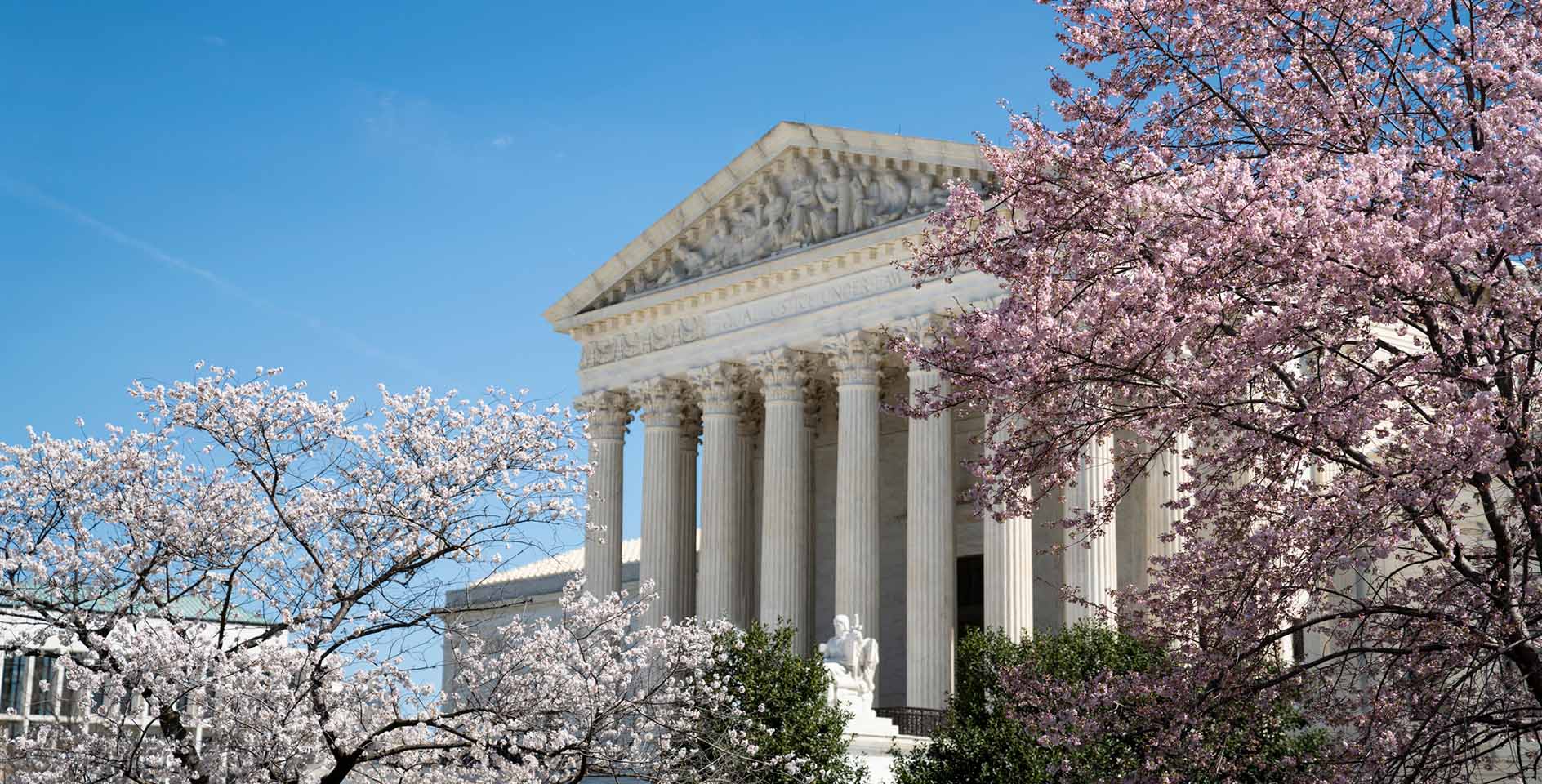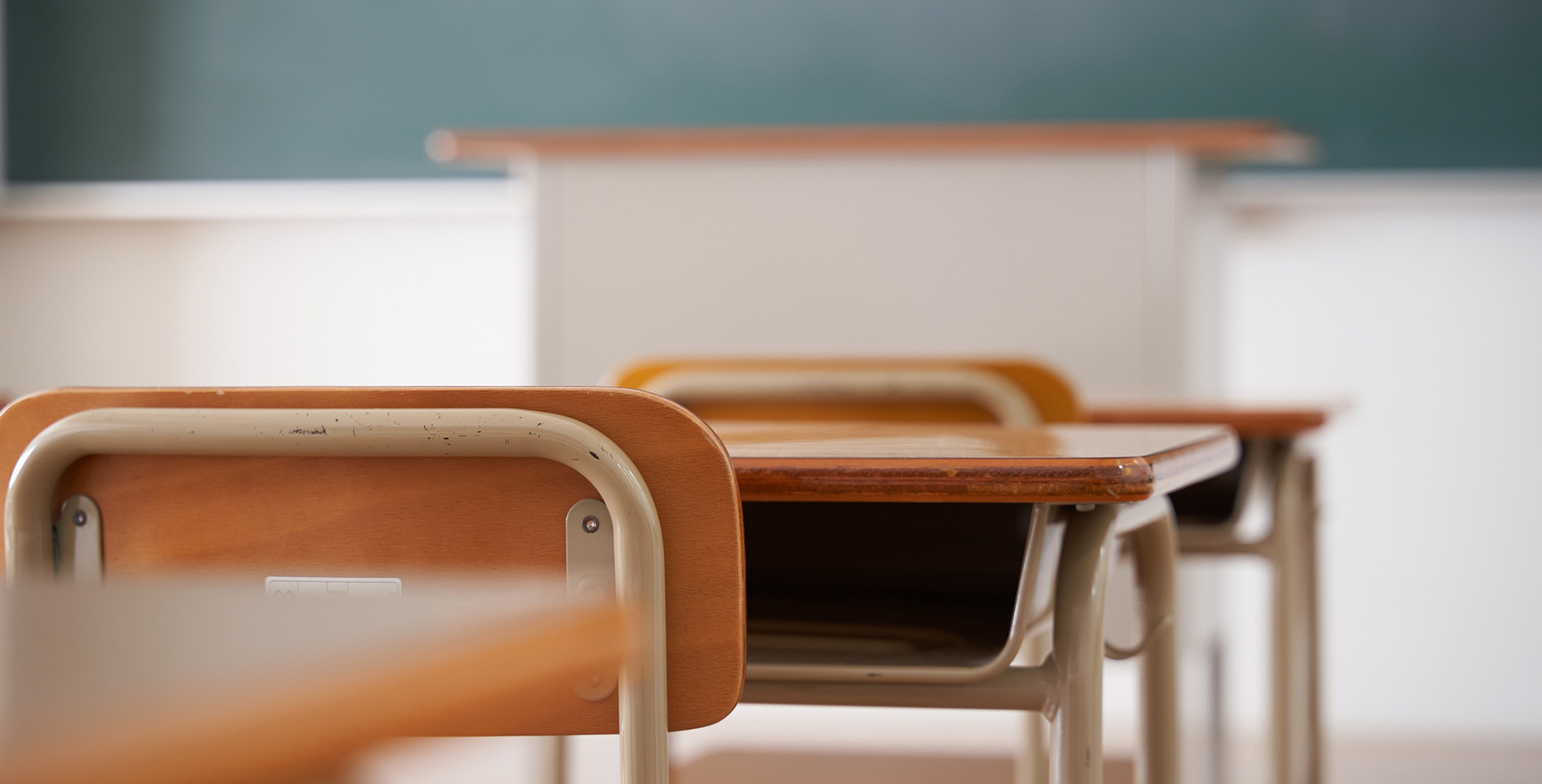In an affirmation of religious expression, the Supreme Court ruled 6-3 in Kennedy v. Bremerton on June 27 that “the Free Exercise and Free Speech Clauses of the First Amendment protect an individual engaging in a personal religious observance from government reprisal.” The court found that Coach Kennedy’s private prayers after football games were “private speech, not government speech,” and teachers and students need not “shed their constitutional rights to freedom of speech or expression at the schoolhouse gate.”
Justice Gorsuch wrote the opinion of the court joined by Justices Thomas, Alito, and Barrett. Kavanaugh also joined the majority opinion except for Part III-B. Justices Thomas and Alito wrote concurring opinions. Justice Sotomayor authored the dissenting opinion, joined by Justices Breyer and Kagan.
The ERLC applauds the court for continuing to strengthen our nation’s long legacy of religious expression. First Amendment protections travel together, and the court was wise to observe that Coach Kennedy’s personal expressions of religious devotion created “no conflict between the constitutional commands of the First Amendment.”
In the amicus brief the ERLC joined, we argued that “the Establishment Clause does not require public schools to be policed as religion-free zones.” We agree with the court that public employees retain the freedom to act in private capacities while on the job, and teachers and coaches should be able to practice their religious beliefs without fear of excessive state incursion.
Below are key quotes from the majority opinion, concurrence, and dissent, highlighting how the court reached its decision. Page numbers from the court’s decision are given for each quote, but legal citations are omitted for clarity of reading.
For more details on the religious liberty issues present in this case, see our explainer here. To keep up to date on all Supreme Court cases we are watching in 2022, visit ERLC.com/SCOTUS.
———-
From the Syllabus
“The District Court found that the ‘sole reason’ for the District’s decision to suspend Mr. Kennedy was its perceived ‘risk of constitutional liability’ under the Establishment Clause for his ‘religious conduct’ after three games.” (1)
“The Free Exercise and Free Speech Clauses of the First Amendment protect an individual engaging in a personal religious observance from government reprisal; the Constitution neither mandates nor permits the government to suppress such religious expression.” (1)
“The District, like the Ninth Circuit below, insists Mr. Kennedy’s rights to religious exercise and free speech must yield to the District’s interest in avoiding an Establishment Clause violation under Lemon and its progeny.” (4)
“But—given the apparent ‘shortcomings’ associated with Lemon’s ‘ambitiou[s],’ abstract, and ahistorical approach to the Establishment Clause—this Court long ago abandoned Lemon and its endorsement test offshoot…In place of Lemon and the endorsement test, this Court has instructed that the Establishment Clause must be interpreted by ‘reference to historical practices and understandings.’” (4)
“The District next attempts to justify its suppression of Mr. Kennedy’s religious activity by arguing that doing otherwise would coerce students to pray…The Ninth Circuit did not adopt this theory in proceedings below and evidence of coercion in this record is absent.” (5)
“Respect for religious expressions is indispensable to life in a free and diverse Republic. Here, a government entity sought to punish an individual for engaging in a personal religious observance, based on a mistaken view that it has a duty to suppress religious observances even as it allows comparable secular speech. The Constitution neither mandates nor tolerates that kind of discrimination.” (6)
Majority Opinion: Justice Gorsuch
“Both the Free Exercise and Free Speech Clauses of the First Amendment protect expressions like Mr. Kennedy’s. Nor does a proper understanding of the Amendment’s Establishment Clause require the government to single out private religious speech for special disfavor.” (1)
“Under this Court’s precedents, a plaintiff may carry the burden of proving a free exercise violation in various ways, including by showing that a government entity has burdened his sincere religious practice pursuant to a policy that is not ‘neutral’ or ‘generally applicable.’” (12)
“In this case, the District’s challenged policies were neither neutral nor generally applicable….Prohibiting a religious practice was thus the District’s unquestioned ‘object.’ The District candidly acknowledged as much below, conceding that its policies were ‘not neutral’ toward religion.” (14)
“Of course, none of this means the speech rights of public school employees are so boundless that they may deliver any message to anyone anytime they wish…If a public employee speaks ‘pursuant to [his or her] official duties,’ this Court has said the Free Speech Clause generally will not shield the individual from an employer’s control and discipline because that kind of speech is—for constitutional purposes at least—the government’s own speech.” (15)
“At the other end of the spectrum, when an employee ‘speaks as a citizen addressing a matter of public concern,’ our cases indicate that the First Amendment may be implicated and courts should…attempt to engage in ‘a delicate balancing of the competing interests surrounding the speech and its consequences.’” (15)
“It seems clear to us that Mr. Kennedy has demonstrated that his speech was private speech, not government speech.” (17)
“Others working for the District were free to engage briefly in personal speech and activity…That Mr. Kennedy chose to use the same time to pray does not transform his speech into government speech. To hold differently would be to treat religious expression as second-class speech.” (19)
“It is true that this Court and others often refer to the ‘Establishment Clause,’ the ‘Free Exercise Clause,’ and the ‘Free Speech Clause’ as separate units. But the three Clauses appear in the same sentence of the same Amendment.” (20)
“In Lemon this Court attempted a ‘grand unified theory’ for assessing Establishment Clause claims…that approach called for an examination of a law’s purposes, effects, and potential for entanglement with religion.”(22)
“In place of Lemon and the endorsement test, this Court has instructed that the Establishment Clause must be interpreted by ‘reference to historical practices and understandings. [T]he line’ that courts and governments ‘must draw between the permissible and the impermissible’ has to ‘accord with history and faithfully reflect the understanding of the Founding Fathers.’” (23)
“Now, [the school district] says, it was justified in suppressing Mr. Kennedy’s religious activity because otherwise it would have been guilty of coercing students to pray. And, the District says, coercing worship amounts to an Establishment Clause violation on anyone’s account of the Clause’s original meaning.” (24)
“To be sure, this Court has long held that government may not, consistent with a historically sensitive understanding of the Establishment Clause, ‘make a religious observance compulsory.’ But in this case Mr. Kennedy’s private religious exercise did not come close to crossing any line one might imagine separating protected private expression from impermissible government coercion.” (24-25)
“In short, Mr. Kennedy did not seek to direct any prayers to students or require anyone else to participate.” (26)
“Naturally, Mr. Kennedy’s proposal to pray quietly by himself on the field would have meant some people would have seen his religious exercise. Those close at hand might have heard him too. But learning how to tolerate speech or prayer of all kinds is ‘part of learning how to live in a pluralistic society,’ a trait of character essential to ‘a tolerant citizenry.’” (26)
“Of course, some will take offense to certain forms of speech or prayer they are sure to encounter in a society where those activities enjoy such robust constitutional protection. But ‘offense… does not equate to coercion.’” (26-27)
“Here, the District suggests that any visible religious conduct by a teacher or coach should be deemed—without more and as a matter of law—impermissibly coercive on students…Such a rule would be a sure sign that our Establishment Clause jurisprudence had gone off the rails. In the name of protecting religious liberty, the District would have us suppress it. Rather than respect the First Amendment’s double protection for religious expression, it would have us preference secular activity. Not only could schools fire teachers for praying quietly over their lunch, for wearing a yarmulke to school, or for offering a midday prayer during a break before practice. Under the District’s rule, a school would be required to do so.” (28)
“We are aware of no historically sound understanding of the Establishment Clause that begins to ‘make it necessary for government to be hostile to religion’ in this way.” (29)
“In truth, there is no conflict between the constitutional commands before us. There is only the ‘mere shadow’ of a conflict, a false choice premised on a misconstruction of the Establishment Clause. And in no world may a government entity’s concerns about phantom constitutional violations justify actual violations of an individual’s First Amendment rights.” (31)
“The only meaningful justification the government offered for its reprisal rested on a mistaken view that it had a duty to ferret out and suppress religious observances even as it allows comparable secular speech. The Constitution neither mandates nor tolerates that kind of discrimination.” (31-32)
Concurring Opinion: Justice Thomas
“I write separately to emphasize that the Court’s opinion does not resolve two issues related to Kennedy’s free-exercise claim.” (1)
“First, the Court refrains from deciding whether or how public employees’ rights under the Free Exercise Clause may or may not be different from those enjoyed by the general public.” (1)
“We have held that ‘the First Amendment protects public employee speech only when it falls within the core of First Amendment protection — speech on matters of public concern.’ It remains an open question, however, if a similar analysis can or should apply to free-exercise claims in light of the ‘history’ and ‘tradition’ of the Free Exercise Clause.” (1-2)
“Second, the Court also does not decide what burden a government employer must shoulder to justify restricting an employee’s religious expression because the District had no constitutional basis for reprimanding Kennedy under any possibly applicable standard of scrutiny…A government employer’s burden therefore might differ depending on which First Amendment guarantee a public employee invokes.” (2)
Concurring Opinion: Justice Alito
“Petitioner’s expression occurred while at work but during a time when a brief lull in his duties apparently gave him a few free moments to engage in private activities. When he engaged in this expression, he acted in a purely private capacity.” (1)
“The Court does not decide what standard applies to such expression under the Free Speech Clause but holds only that retaliation for this expression cannot be justified based on any of the standards discussed.” (1)
Dissenting Opinion: Justice Sotomayor
“This case is about whether a public school must permit a school official to kneel, bow his head, and say a prayer at the center of a school event. The Constitution does not authorize, let alone require, public schools to embrace this conduct.” (1)
“The Court now charts a different path, yet again paying almost exclusive attention to the Free Exercise Clause’s protection for individual religious exercise while giving short shrift to the Establishment Clause’s prohibition on state establishment of religion.” (1)
“The record reveals that Kennedy had a longstanding practice of conducting demonstrative prayers on the 50-yard line of the football field. Kennedy consistently invited others to join his prayers and for years led student athletes in prayer at the same time and location.” (1-2)
“Kennedy recounted that he initially prayed alone and that he never asked any student to join him. Over time, however, a majority of the team came to join him, with the numbers varying from game to game. Kennedy’s practice evolved into postgame talks in which Kennedy would hold aloft student helmets and deliver speeches with ‘overtly religious references,’ which Kennedy described as prayers, while the players kneeled around him.” (4)
“The District reiterated that ‘all District staff are free to engage in religious activity, including prayer, so long as it does not interfere with job responsibilities’…To avoid endorsing student religious exercise, the District instructed that such activity must be non-demonstrative or conducted separately from students, away from student activities.” (6)
“While Kennedy’s letter asserted that his prayers ‘occurr[ed] on his own time after his duties as a District employee had ceased,’ the District pointed out that Kennedy ‘remain[ed] on duty’ when his prayers occurred ‘immediately following completion of the football game, when students are still on the football field, in uniform, under the stadium lights, with the audience still in attendance, and while Mr. Kennedy is still in his District-issued and District-logoed attire.’ The District further noted that ‘[d]uring the time following completion of the game, until players are released to their parents or otherwise allowed to leave the event, Mr. Kennedy, like all coaches, is clearly on duty and paid to continue supervision of students.” (8)
“This case is about whether a school district is required to allow one of its employees to incorporate a public, communicative display of the employee’s personal religious beliefs into a school event, where that display is recognizable as part of a longstanding practice of the employee ministering religion to students as the public watched. A school district is not required to permit such conduct; in fact, the Establishment Clause prohibits it from doing so.” (13-14)
“Taken together, these two Clauses (the Religion Clauses) express the view, foundational to our constitutional system, ‘that religious beliefs and religious expression are too precious to be either proscribed or prescribed by the State.’” (14)
“First, government neutrality toward religion is particularly important in the public school context given the role public schools play in our society. ‘The public school is at once the symbol of our democracy and the most pervasive means for promoting our common destiny,’ meaning that ‘[i]n no activity of the State is it more vital to keep out divisive forces than in its schools.’” (15)
“The State ‘exerts great authority and coercive power’ in schools as a general matter ‘through mandatory attendance requirements.’ Moreover, the State exercises that great authority over children, who are uniquely susceptible to “subtle coercive pressure.” (15)
“Given the twin Establishment Clause concerns of endorsement and coercion, it is unsurprising that the Court has consistently held integrating prayer into public school activities to be unconstitutional, including when student participation is not a formal requirement or prayer is silent.” (16)
“Permitting a school coach to lead students and others he invited onto the field in prayer at a predictable time after each game could only be viewed as a post-game tradition occurring ‘with the approval of the school administration.’” (17)
“The District Court found, in the evidentiary record, that some students reported joining Kennedy’s prayer because they felt social pressure to follow their coach and teammates. Kennedy told the District that he began his prayers alone and that players followed each other over time until a majority of the team joined him, an evolution showing coercive pressure at work…That BHS students did not join Kennedy in these last three specific prayers did not make those events compliant with the Establishment Clause. The coercion to do so was evident.” (18-19)
“But existing precedents do not require coercion to be explicit, particularly when children are involved. To the contrary, this Court’s Establishment Clause jurisprudence establishes that ‘the government may no more use social pressure to enforce orthodoxy than it may use more direct means.’” (19)
“Constitutional rights, however, are not absolutes. Rights often conflict and balancing of interests is often required to protect the separate rights at issue (noting that ‘the presence of countervailing interests . . . is what makes a constitutional question hard, and what require[s] balancing).” (20)
“First, as to Kennedy’s free speech claim, Kennedy ‘accept[ed] certain limitations’ on his freedom of speech when he accepted government employment.” (20)
“The last three games proved that Kennedy did not intend to pray silently, but to thrust the District into incorporating a religious ceremony into its events, as he invited others to join his prayer and anticipated in his communications with the District that students would want to join as well.” (22)
“Finally, the Court acknowledges that the Establishment Clause prohibits the government from coercing people to engage in religion practice, but its analysis of coercion misconstrues both the record and this Court’s precedents.” (30)
“The Court’s suggestion that coercion must be ‘direc[t]’ to be cognizable under the Establishment Clause is contrary to long established precedent. The Court repeatedly has recognized that indirect coercion may raise serious establishment concerns, and that ‘there are heightened concerns with protecting freedom of conscience from subtle coercive pressure in the elementary and secondary public schools.’” (30)
“The question before the Court is not whether a coach taking a knee to pray on the field would constitute an Establishment Clause violation in any and all circumstances.It is whether permitting Kennedy to continue a demonstrative prayer practice at the center of the football field after years of inappropriately leading students in prayer in the same spot, at that same time, and in the same manner, which led students to feel compelled to join him, violates the Establishment Clause. It does.” (33)
“Today, the Court once again weakens the backstop. It elevates one individual’s interest in personal religious exercise, in the exact time and place of that individual’s choosing, over society’s interest in protecting the separation between church and state, eroding the protections for religious liberty for all.” (35)






